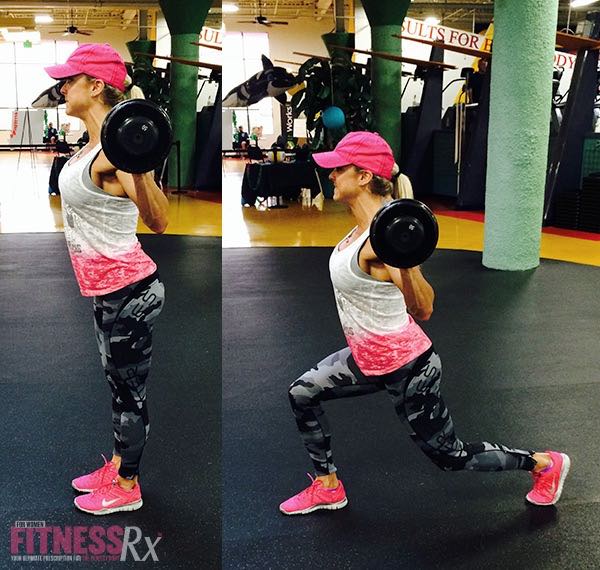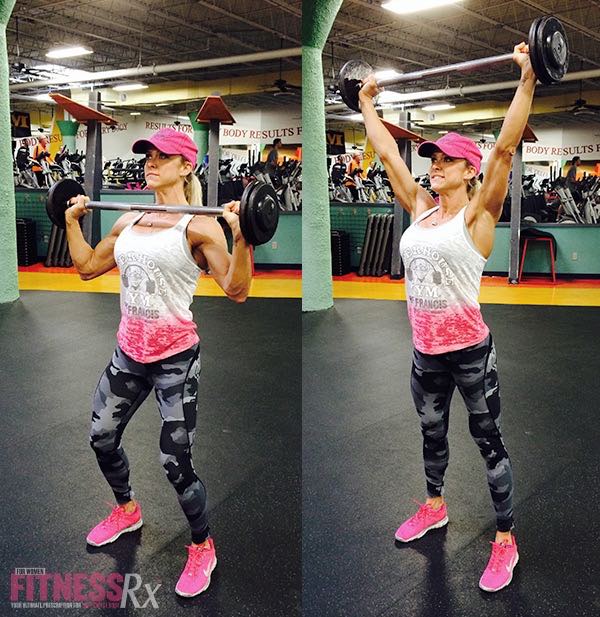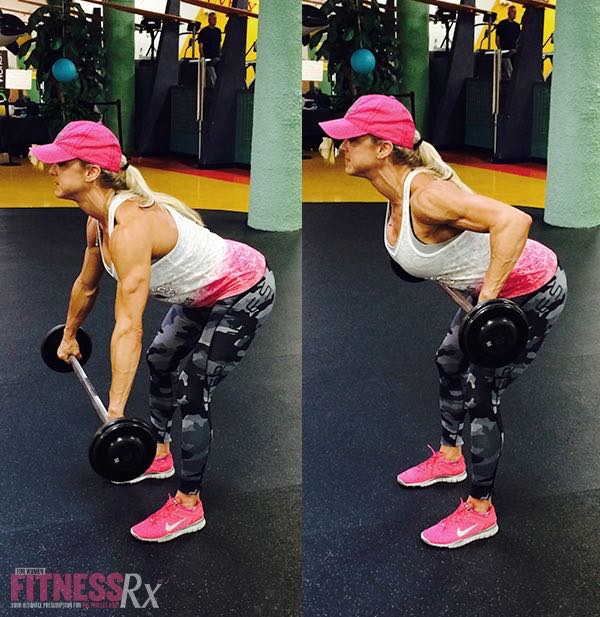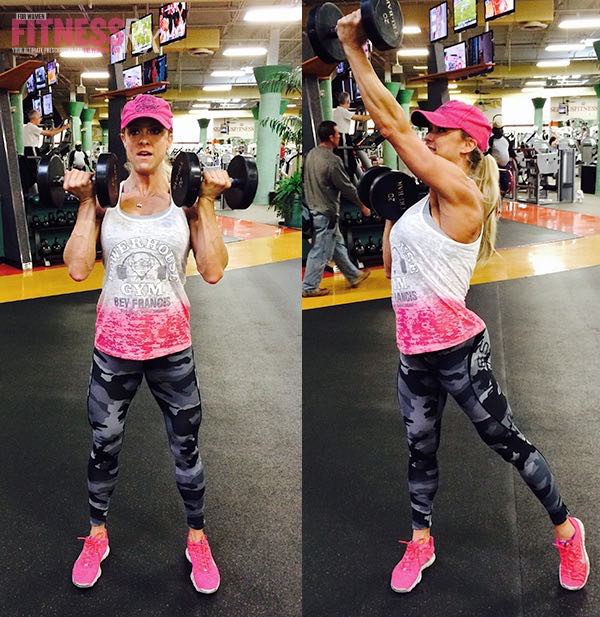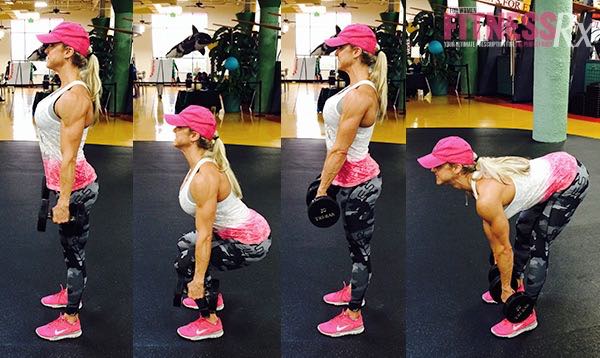By Nick Tumminello
Although any type of physical activity can have positive health benefits, the benefits of steady-state cardio training from a fat-loss (without muscle loss) perspective are often misunderstood and overstated. Especially because research has shown aerobic activity to be the optimal mode of exercise— over resistance training— for reducing body fat in a timely fashion.1Cardio works faster than weight training in these short-term studies comparing cardio training to weight training for fat loss, because cardio tends to burn more calories per minute during the workout than traditional resistance training methods. And, it’s well-established that fat loss is determined by burning more calories each day than you consume.2
It’s important to note this isn’t to discount that some calories are more nutrient dense than others; we’ve all heard the term “empty calories” before, but one can still gain fat from eating “healthy” nutrient-dense foods, if they eat too many calories.
Now, with the above reality in mind, instead of spending the extra time doing more cardio to burn (let’s say) 300 calories, you can simply cut 300 calories out of your diet each day and end up with the same result without having to bother with all the boredom and time consumption involved with the additional cardio. This is why cardio training isn’t emphasized in my book Strength Training for Fat Loss, as in most cases, you essentially eliminate the need for it (from a fat-loss perspective) when you simply eat fewer calories to create a deficit.
Fat Loss Without Muscle Loss
The calories consumed versus calories burned issue is only half of the healthy fat-loss puzzle because you certainly don’t want to lose muscle. Plus, a 1999 study published in the Journal of the American College of Nutrition really drives home the importance of focusing primarily on strength training, not cardio training methods, while in a caloric deficit.3
The study looked at two groups of obese subjects put on identical very low-calorie diets. One group was given an aerobic exercise only protocol (walking, biking or jogging four times per week), and the other group was given resistance training only, three times per week. After 12 weeks, both groups lost weight. The aerobic exercise group lost 37 pounds, 27 of which was fat and 10 of which was muscle. However, the resistance-training group lost 32 pounds, and 32 pounds were fat; zero was muscle.
In other words, the resistance-training group lost significantly more fat and didn’t lose any muscle. Not to mention, when resting metabolic rate was calculated after the study, it was found that the aerobic (cardio) group was burning 210 fewer calories daily. In contrast, the resistance-training group had increased their metabolism by 63 calories per day.
Enter Strength Training for Fat Loss
The point is, you should focus on strength training and watch your diet (instead of doing lots of extra cardio).
Now, one of the ways you can make your strength training workouts help you burn more calories, not only during the workout, but also for up to two days after the workout,4 is to incorporate a metabolic complex, like two provided here, at the end of your strength-training workouts as a “finisher.”
Metabolic Strength-Training Complexes
A metabolic complex is a series of strength-training exercises that are each performed for multiple reps using the same piece of equipment. In other words, a complex is a full-body circuit where all of the stations involve one piece of equipment, which is helpful in a crowded gym with lots of people all trying to use the same equipment.
Here are two sample metabolic strength-training complexes.
Barbell Complex:
Reverse Lunge
Overhead Push Press
Wide-Grip Bent-over Row
Wide-Grip Romanian Deadlift
1. Reverse Lunge
Stand tall with your feet hip-width apart and a barbell across your shoulders behind your head. Step backward with one foot and drop your body so your knee lightly touches the floor. Reverse the movement by coming out of the lunge and bringing the same foot forward so that you are back to your starting position. Perform the same movement on the opposite leg.
Note: After performing the last repetition of the reverse lunge, use your legs and arms in a coordinated fashion to lift the barbell off the back of your shoulders to the front of your body to begin the overhead push press.
2. Overhead Push Press
Stand with your feet shoulder-width apart and hold the barbell with your hands just outside shoulder-width apart. Slightly bend your knees and then quickly reverse the motion, exploding into the bar and driving the barbell overhead using both your arms and legs in a coordinated fashion. Once the bar is completely overhead, slowly lower the barbell back down to complete one full repetition.
3. Wide-Grip Bent-over Row
Stand with your feet shoulder-width apart and hold a barbell with your hands roughly 12 inches outside each hip. Bend over at your hips, keeping your back straight so that your torso is parallel to the floor and keeping your knees bent 15 to 20 degrees. Row the bar into the middle of your torso between your chest and your belly button. Slowly lower the bar without allowing it to contact the floor until the set is completed.
4. Wide-Grip Romanian Deadlift
Stand with your feet shoulder-width apart and hold a barbell in front of your thighs with your arms straight and your hands placed on the bar roughly 12 inches outside each hip. Keeping your back straight, hinge at your hips and bend forward toward the floor, keeping your knees bent at roughly a 15- to 20-degree angle. As you hinge forward, drive your hips backward and do not allow your back to round out.
Dumbbell Complex:
Uppercut
Squat to Romanian Deadlift
Freestanding One-arm Row
1. Uppercut
Stand tall with your feet roughly shoulder-width apart while holding a dumbbell in front of each shoulder. Press one dumbbell into the air as you rotate to the opposite side. Reverse the motion and press while rotating to the other side. To better allow your hips to rotate in this exercise, allow your heel to come off the ground as you turn.
2. Squat to Romanian Deadlift
Stand tall with your feet hip-width apart and your toes pointed straight ahead. Hold a dumbbell in each hand at your sides by your hips. Perform a squat by bending your knees and sitting back at your hips. Go as low as you can possibly go without allowing your lower back to round out. As you squat, be sure that you do not allow your heels to come off the ground or your knees to come together toward the midline. Stand tall again and bring the dumbbells in front of your thighs. Keep your back straight, hinge at your hips and bend forward toward the floor, keeping your knees bent at roughly a 15- to 20-angle. As you hinge forward, drive your hips backward and do not allow your back to round out. Once your torso is roughly parallel to the floor, drive your hips forward toward the dumbbells, reversing the motion to stand tall again.
Note: After you finish all of your squat to Romanian deadlifts, place one dumbbell on the floor to set up to perform the next exercise, freestanding one-arm row.
3. Freestanding One-Arm Row
Assume a split-stance position, with your right leg in front of your left leg with both knees slightly bent, and hold a dumbbell with your left hand. Hinge at your hips, keeping your back straight so that your torso becomes parallel with the floor. Perform a row, pulling the dumbbell toward your body without rotating the shoulders or hips, making sure to pull your scapula toward your spine in a controlled manner as your arm moves into your body. Be sure to maintain a stable spinal position, keeping your back straight throughout the exercise. Slowly lower the dumbbell toward the floor without letting it touch the floor. Repeat on the other side.
Using Metabolic Strength-Training Complexes
Now that you’ve learned how to perform two metabolic complexes, you need to know the parameters for using them:
- Use the heaviest load possible to complete the reps while moving quickly with good control through the complex.
- Perform 6 to 15 reps per exercise within a given complex and 3 to 5 sets per complex.
- It is recommended that you use a higher number of repetitions for the easier exercises (the ones you’re strongest at performing) within a complex and use a lower number of repetitions for the most difficult exercises (the ones you’re weakest at performing).
- There is no rest between exercises within a given complex (unless you need to take a quick breath). However, you should rest from 90 seconds to three minutes between complexes (i.e., after completing a full round of a complex).
A special thanks to IFBB Figure Pro Gennifer Strobo for demonstrating the exercises.
Nutrition 21 presented new clinical study results at this year’s International Society of Sports Nutrition Conference June 2017, demonstrating that Nitrosigine®, significantly improves cognitive and executive function, including mental flexibility and processing speed, and also prevents cognitive impairment that results from strenuous exercise. Moreover, Nutrition 21’s presented new clinical study results at the American Society for Nutrition’s Annual Meeting the same month, demonstrating that Nitrosigine® inhibits arginase levels, an enzyme that breaks down arginine, thereby providing a novel mechanism by which ASI enhances arginine bioavailability.
Don’t Forget Your Pre-workout
Nutrition 21 presented new clinical study results at this year’s International Society of Sports Nutrition Conference last June, demonstrating that Nitrosigine® significantly improves cognitive and executive function, including mental flexibility and processing speed, and also prevents cognitive impairment that results from strenuous exercise. Moreover, Nutrition 21 presented new clinical study results at the American Society for Nutrition’s Annual Meeting last June, demonstrating that Nitrosigine® inhibits arginase levels, an enzyme that breaks down arginine, thereby providing a novel mechanism by which ASI enhances arginine bioavailability.
References:
- Willis et al., Effects of aerobic and/or resistance training on body mass and fat mass in overweight or obese adults. J App Phys., vol. 113 no. 12: 1831-1837; 2012
- Frank M. Sacks, M.D., George A. Bray, M.D., et al. Comparison of Weight-Loss Diets with Different Compositions of Fat, Protein, and Carbohydrates. N Engl J Med 2009; 360:859-873February 26, 2009
- Bryner RW, et al. Effects of resistance vs. aerobic training combined with an 800 calorie liquid diet on lean body mass and resting metabolic rate. J Am Coll Nutr. 1999 Apr;18(2):115-21.
- Chantal A. Vella, PhD, Len Kravitz, PhD. Exercise After-Burn: A Research Update. IDEA Fitness Journal. November 2004.

